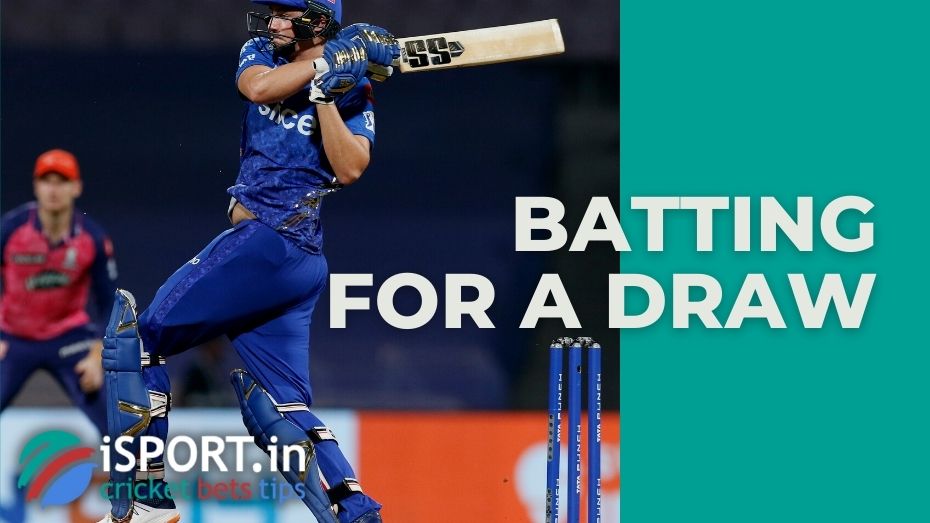Batting for a draw

In cricket, there are several possible outcomes to a match: victory, defeat, draw and tie. Batting for a draw is a defensive strategy used by a team that holds a slight advantage but does not risk playing for a win and strives to keep a draw result.
Batting for a Draw: The Basics
It is difficult for people who have never followed cricket to understand how a match that lasts several days can end in a draw. In sports like tennis or basketball, there’s always a winner. Football can end in a draw, but usually only in regular league matches or the group stages of major tournaments.
In cricket, there are three circumstances in which a draw is recorded at the end of a match:
- The team batting in the fourth innings does not reach the target score.
- The team that plays from the bowling position does not knock out the opponent.
- The match runs out of time before a result is achieved.
Notably, a draw doesn’t require both teams to have the same number of runs. It is also important to know that draws only happen in first-class cricket matches. These involve 11 players in each team. From the batting position, each team plays two innings. Matches between full members of the International Cricket Council (ICC), as well as games in national championships of these countries, hold first-class status. One of the most prestigious domestic tournaments are the championships in Australia, India and England.
Striving for a draw, the batting side primarily focuses on protecting its wickets rather than scoring aggressively. The objective is survival, not victory. While the final stages of such matches can sometimes seem uneventful, they can also produce moments of great tension and drama.
Batting for a Draw: Draw vs. a Tie
Sometimes it is difficult for novice cricket fans to distinguish batting for a draw from a tie. In fact, everything is simple.
- A tie occurs when both teams finish with the exact same number of runs, and all innings are completed.
- A draw happens when time runs out before either team can secure a result, regardless of the run totals.
Let’s assume that the national teams of India and Pakistan met on the field in a Test match. The Indians are the first to play on the batting side and scores 300 runs. Pakistan replies with 250. India then scores 200 in their second innings, and Pakistan matches that with another 250. Both teams now have 500 runs, but since all innings were completed and the scores are level, the match ends in a tie.
Ties are rare in cricket. There were two known cases in history when similar results were recorded in international matches:
- In 1960, the match between the West Indies and Australia ended with this score.
- In 1986 the Australians also had a tie, and they met with the Indian national team this time.
At the same time, draws are much more common in cricket. For example, in the legendary Ashes series between England and Australia, 91 matches have ended in a draw. The series itself has also been drawn six times.
Batting for a Draw: Other Possible Match Outcomes
Aside from wins, losses, draws, and ties, another possible outcome is “No Result”. Most often, it appears if weather conditions interfere with the match (most often rain). In this case, the weather does not allow the teams to play a certain number of overs, after which it would be possible to identify the winner:
- In 50 over cricket, teams must play at least 20 overs.
- In 20 over cricket, teams must play at least 5 overs.
If the game received “No result”, then batting for a draw must be held after it.
Matches can also be abandoned, typically due to prolonged bad weather. In this case, meetings are most often resumed if we talk about matches taking place for over several days. If these are one-day matches, the umpires have the opportunity to use the DLS (Duckworth-Lewis-Stern) method, but in this case, the condition for the number of overs played (either 5 or 20) must also be met.
